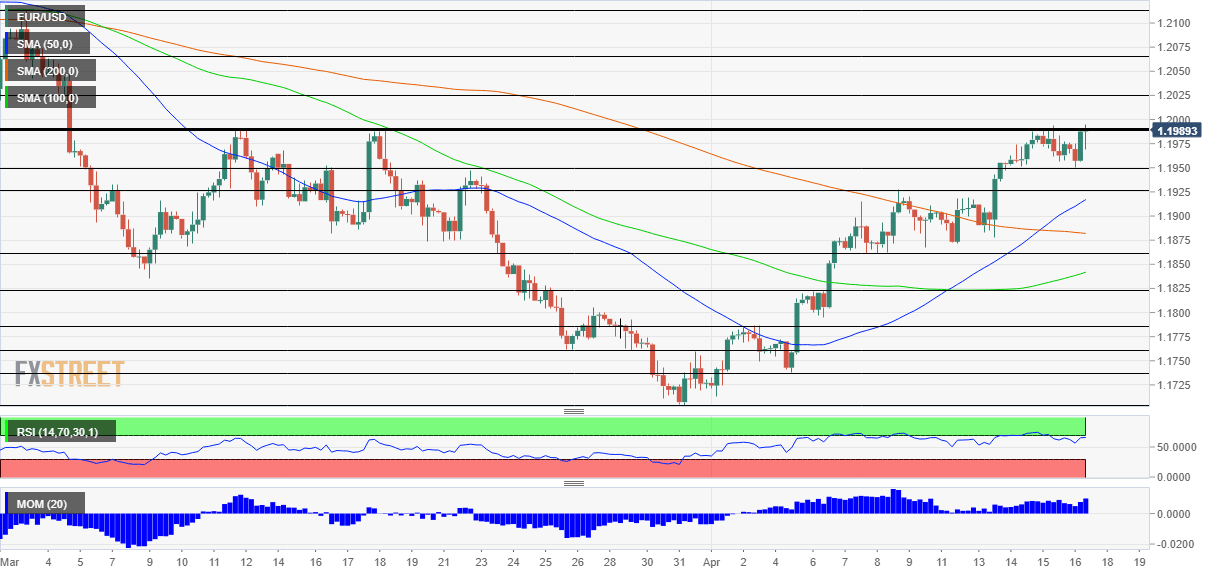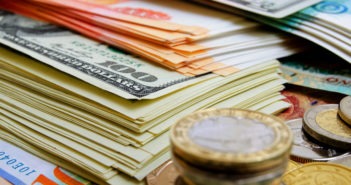- EUR/USD has been benefiting from falling US yields.
- Previous and upcoming US data may trigger a dollar rally risks a downfall.
- Friday’s four-hour chart is pointing to fresh gains.
Break or bounce? That is the question for EUR/USD as it approaches 1.20 for the fourth time since early March and the second time this week. Fresh demand for US Treasuries, reversing previous trends, is dragging the dollar lower. Ten-year yields are depressed well below 1.57% after hitting 1.77% several weeks ago, and that is capping the greenback.
However, this increase in returns on US debt is detached from economic reality, as reflected in the latest batch of US economic releases. The consumption-centered US economy is enjoying a boom – Retail Sales leaped by 9.8% in March, a result of vaccinations, reopenings and stimulus checks. Employment is also improving quickly, with jobless claims tumbling to 576,000 last week.
The last significant release for the week is the University of Michigan’s Consumer Sentiment Index. Preliminary figures for April will likely show an ongoing improvement, indicating an extended shopping spree. In addition, Building Permits and Housing Starts statistics for March are due out and they have likely increased. America’s “race for space” – room to work at home – is driving the housing sector higher.
See US Michigan Consumer Sentiment April Preview: Happiness is on the way
In the old continent, French COVID-19 deaths have surpassed 100,000, but there are glimmers of hope. Paris has reported falling cases and other countries experience slower increases in infections as vaccinations ramp up. Nearly one of every five Europeans has received at least one shot.
While frustration about lockdowns is elevated, the expected pickup in immunization and early results from the campaign may boost the common currency later on.
All in all, the US dollar seems to have an economic advantage, but falling yields and some hope for Europe balance the picture, leaving 1.20 for grabs.
EUR/USD Technical Analysis

Momentum on the four-hour chart is to the upside and the currency pair trades above the 50, 100 and 200 Simple Moving Averages. The Relative Strength Index has dropped below 70, exiting overbought conditions and allowing for more gains.
Above 1.20, the next levels to watch are 1.2025 and 1.2065.
Support awaits at 1.1950, a separator of ranges, followed by 1.1925 and then only by 1.1860.
The pause that refreshes: Are currency markets hesitant to run with US data?



